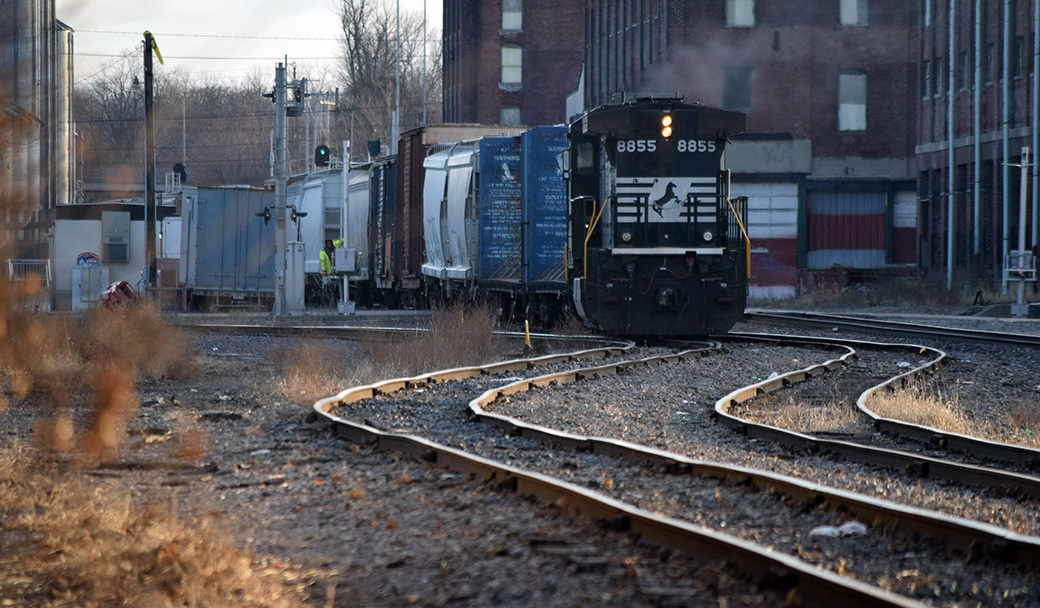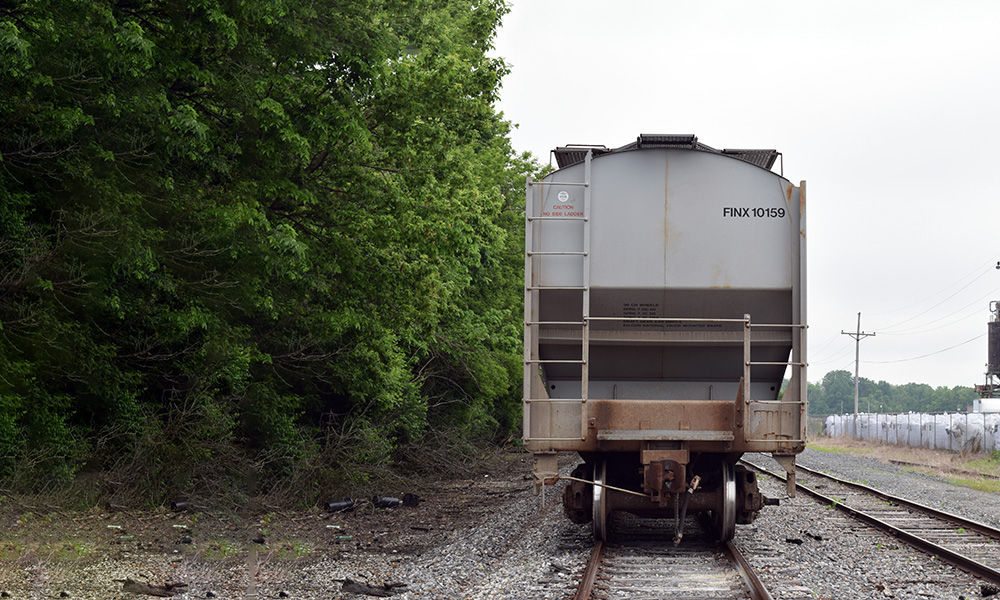
One framework of contemporary railroading is the idea of MASSIVE . Gigantic locomotives and freight cars; huge facilities and heart pounding, in your face action. That’s not the whole story though. As seen in the following images, the modern scene also includes the timeless notion of a single loco working cars at an industry, or a cut of cars quietly waiting to be spotted in place or picked up. Which one draws you more?


My Webster’s Dictionary defines a framework as the skeletal support of a structure. Something that holds things together.
In design terms, a framework can also be a concept or set of core ideas that form a basis for understanding how things work or what they are.
Examples of frameworks we’re familiar with in the craft might be:
The Maine two-footers,
Pacific Northwest logging railroads,
Altoona, Pennsylvania, 1943.
Each of these embodies a set of distinct expectations of what the railroad was like in a particular time and place.
There are a multitude of frameworks to the craft, some, in my view, more helpful than others.
“It’s just a hobby people.”
This framework is an admonishment many invoke to calm hotheaded differences of opinion over some trivial matter. It suggests there is nothing worth getting so worked up about here. While it’s often true, it’s also used to shut people down whose approach makes you uncomfortable. (I don’t care about this art stuff Mike. It’s just a hobby.)
My problem with this pronouncement and others like it, is that they are often framed as universal truths when in fact they are more matters of personal taste and preference. A more precise statement would be: “It’s just a hobby, for me.”
I believe it’s important to be aware of the personal frameworks we filter the craft through. I believe such frameworks shape our ideas of what’s possible and worth pursuing.
My own framework is that this is a craft. One that can be approached creatively and deliberately with the goal of striving for excellence in the work. This broader perspective opens doors of inspiration the more traditional model/hobby viewpoint tends to ignore or dismiss as irrelevant.
Another influence on this framework is that at my current stage of life, I crave simplicity, both in terms of lifestyle and possessions. Susan and I have looked hard at how we want to spend this time of our lives and at what’s truly meaningful to us in terms of our posessions. We’ve cleared out a lot of “stuff” we no longer find meaningful and are cautious and deliberate in our choices around adding more.
As a result I’ve deliberately downsized my hobby and focussed intently on the things that bring me real joy. The bottom line for me is that I don’t need or want it all. While I fully understand these values aren’t widely shared among others, they are what provides the menaing in the craft that I seek.
Simplicity, creativity and craft shape my thinking, and inform my search for inspiration from sources outside the craft, such as art and architectural design and crafts like woodworking. I can easily see the common ground they all share and enjoy the connections between them. This apporoach is the filter I make decisions through.
What does your framework consist of? Why do you choose the things in the craft you do? Are they your choices or do you just blindly accept things as they are given?
There is a tendency to treat model railroading as a fixed entity with a rigid set of definitions and rules that we must bend our thinking around. That’s understandable, as such traditions can be a both a guide and shortcut to understanding. In a negative sense though, a fixed mindset imposes a limited framework that inhibits creativity and learning.
A framework can be a powerful thing whether we are aware of it or not. We can shape a framework for ourselves or allow others to define it for us. I don’t want to shut my brain off at the door to my hobby space. I want to bring all my experience and knowledge to the work. I’ve ways encouraged readers to think about what’s important and worth pursuing on a personal level rather than just accept another’s definition or agenda. The choice is ours to make as we see fit. In the next post, we’ll dive into some practical design thinking and see how it can shape our experience and enjoyment.
Regards,
Mike
Designing Your Thinking Part One
Designing Your Thinking Part Three: Borrowed Space
Hobby time is time devoted to me, not to being a father, son, partner, employee, manager or any of a myriad number of other roles/demands placed upon me. It is not necessarily the same as having some down time with a beer, a few friends or something where I can just relax from everything but I am still not being totally selfish.
I may or may not be very good at meeting the demands of other roles and expectations, but when I can devote time to just me without any thoughts or obligations towards others, well, I quite like being the best me I can be. Getting things right when putting the effort into learning a craft is about as “me” as I can be: I don’t want to sell myself short to myself! I actually don’t mind if the desire to make things by myself, for myself, to the highest possible quality means I won’t fill a basement with an empire of mass-produced trains. It’s all about enjoying the journey. I have no idea what the destination is…